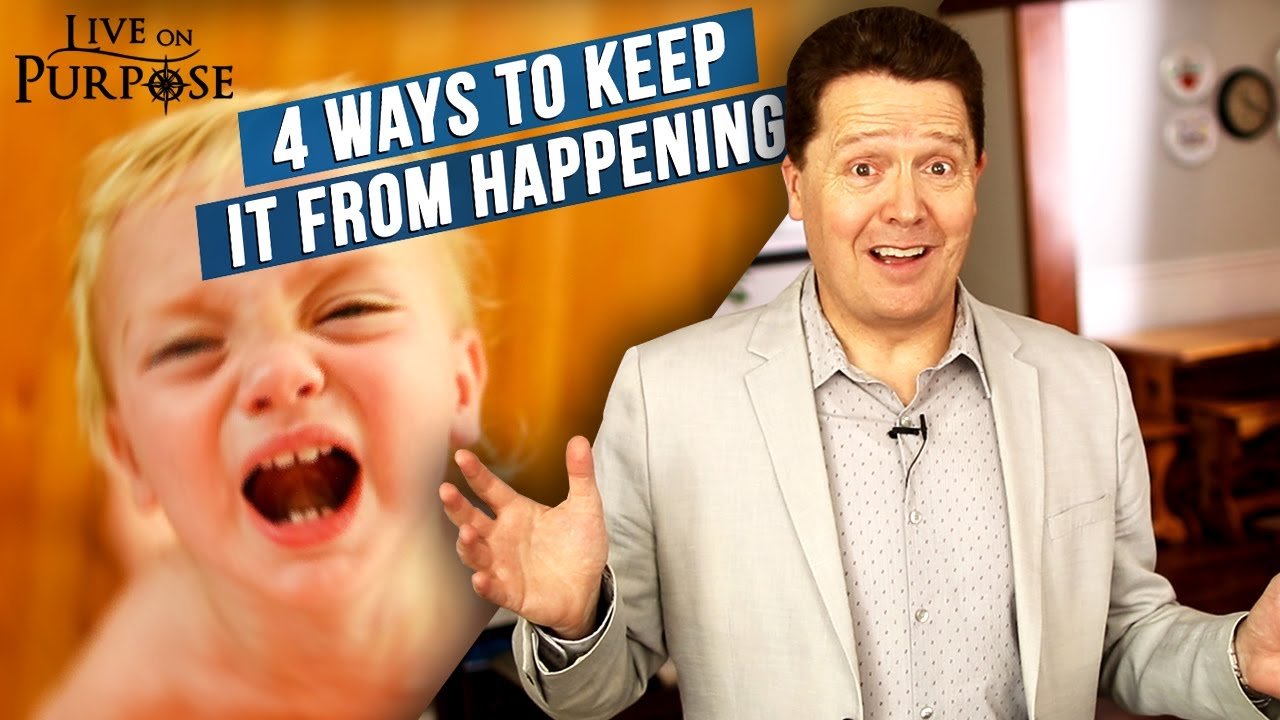In “Contain the Tantrum: Strategies for Managing Your Child’s Meltdown,” you’ll find four essential tips for successfully handling your child’s tantrums. Tantrums are a normal part of a child’s development, and as a parent, it’s important to know how to handle them. The first tip is to stay calm yourself, as children often mirror their parents’ emotions. Then, learn to regulate your own emotions through deep breathing, which helps reverse the fight-or-flight response. The article also emphasizes the importance of containing the tantrum in a designated space while maintaining a respectful and calm demeanor. Additionally, it advises against giving in to your child’s demands during a tantrum and instead modeling respect and appropriate communication. These strategies can help create a positive and supportive parenting approach.

Stay Calm
One of the most important strategies for managing your child’s meltdown is to stay calm yourself. It can be challenging when your child is throwing a tantrum, but your emotional state has a significant impact on their ability to regulate their own emotions. Children are like little emotional mirrors, and they pick up on your energy. If you are feeling stressed or overwhelmed, it will only escalate the situation.
To stay calm, it’s essential to take a moment to regulate your own emotions before addressing your child’s behavior. One effective technique is to practice breathing exercises. Find a quiet space where you can take slow, deep breaths. Inhale through your nose, hold the breath for a few seconds, and then exhale slowly through your mouth. This intentional breathing helps reverse the fight-or-flight response in your brain and calms down your limbic system. By taking control of your emotions, you can approach the situation with a clear mind and a calm demeanor.
Practice Breathing Techniques
Breathing techniques are a powerful tool for managing your own emotions and creating a sense of calm. By incorporating deep breathing exercises into your daily routine, you can develop the skills necessary to stay calm during challenging moments with your child.
To practice breathing techniques, find a quiet and comfortable space where you won’t be interrupted. Close your eyes and begin by taking a deep breath in through your nose, filling your lungs with air. Hold your breath for a few seconds, and then slowly exhale through your mouth, releasing any tension or stress as you do so. Repeat this process several times, focusing on the sensation of your breath entering and leaving your body.
By practicing deep breathing regularly, you can train your mind and body to respond more calmly when faced with stressful situations, such as your child’s meltdown. These techniques can help you remain centered and grounded, allowing you to provide the support and guidance your child needs.
Understand the Fight-or-Flight Response
The fight-or-flight response is a natural reaction that occurs in our brains when we face a perceived threat or stressful situation. This response triggers a surge of adrenaline and prepares our bodies to either confront the danger or flee from it. When your child is experiencing a meltdown, their fight-or-flight response is activated, making it challenging for them to control their emotions.
Understanding the fight-or-flight response can help you approach your child’s meltdown with empathy and patience. By recognizing that their behavior is a result of their brain’s automatic response, you can respond in a calm and supportive manner. Instead of becoming frustrated or angry, remind yourself that your child is not intentionally trying to upset you but is rather overwhelmed by their emotions.
By acknowledging and validating your child’s feelings, you can help them feel understood and supported. Let them know that it’s okay to feel angry or upset but guide them towards healthier ways of expressing their emotions.
Contain the Tantrum
When your child is in the midst of a meltdown, it’s important to contain the situation to prevent any harm or further escalation. You can do this by choosing a specific space where the tantrum can be safely expressed. This space should be a contained area, such as their room or a designated timeout chair.
By containing the tantrum, you create a safe and controlled environment for both yourself and your child. This also helps your child understand that their behavior has consequences and that certain behaviors are not acceptable outside of the designated space.
While containing the tantrum, it’s essential to use calming language to communicate with your child. Speak in a calm and soothing tone, letting them know that you understand they are upset and that this is the place where they can express their emotions. By acknowledging their feelings and providing them with a safe outlet, you can help them process their emotions more effectively.
Choose a Contained Space
Choosing a contained space for your child’s tantrum is crucial for their safety and for maintaining a sense of control during the meltdown. This space should be separate from other areas of the house, ensuring that they cannot harm themselves or others. It should also be a space where your child feels comfortable and secure, such as their own room or a designated timeout area.
By selecting a contained space, you create boundaries for your child’s behavior and give them a sense of structure. They will begin to associate this space with the expression of their emotions, allowing them to understand that their tantrum is limited to this specific area. This containment helps prevent their behavior from spreading to other areas of the house or becoming disruptive to others.
When guiding your child towards the contained space, use gentle and reassuring language. Let them know that this is the place where they can have their meltdown and that you will be there to support them. By establishing a clear location for their tantrum, you can manage the situation with greater ease and minimize any potential negative impact on your child or their environment.
Use Calming Language
When your child is in the midst of a meltdown, it’s important to use calming language to communicate with them. The words you choose and the tone of your voice can have a significant impact on how they perceive and respond to the situation.
Speak in a soft and soothing tone, using words that convey empathy and understanding. Let your child know that you recognize their feelings and that it’s okay for them to express their emotions. Use phrases like “I understand that you’re upset” or “It’s okay to feel angry” to validate their emotions and create a sense of empathy.
Avoid using harsh or judgmental language that may escalate the situation. Instead, focus on remaining calm and patient, offering reassurance and support. By using calming language, you can help de-escalate the meltdown and guide your child towards a more positive emotional state.
Do Not Reinforce the Tantrum
When your child throws a tantrum, it can be tempting to give in to their demands or try to quickly resolve the situation. However, reinforcing the tantrum by rewarding their behavior can create a cycle of meltdowns and make it more challenging to manage their emotions in the future.
Instead of giving in to their demands, stay firm and consistent in your response. Let them know that their behavior will not result in them getting what they want. By setting clear boundaries and expectations, you help your child understand that throwing a tantrum is not an effective means of getting their way.
It’s important to remember that your child’s tantrum is a result of their emotional overload and lack of coping skills. By responding with patience and understanding, you can guide them towards more effective ways of expressing their emotions and problem-solving.
Model Respectful Communication
As a parent, your behavior serves as a model for your child. By demonstrating respectful communication, you teach your child how to express their emotions in a healthy and constructive manner. This includes staying calm, using kind words, and actively listening to their concerns.
During your child’s meltdown, practice active listening by maintaining eye contact, nodding, and acknowledging their feelings. Let them know that you hear and understand their perspective, even if you don’t agree with it. By showing respect and empathy, you can help de-escalate the situation and promote a positive and open line of communication.
It’s also important to model respectful communication in your interactions with others, including your partner, family members, and friends. Your child learns from observing how you navigate conflicts and express your feelings. By demonstrating healthy communication patterns, you create a positive parenting culture that fosters mutual respect and understanding.
Create a Positive Parenting Culture
Creating a positive parenting culture involves establishing an environment that promotes healthy communication, emotional regulation, and respectful behavior. This culture is built on the foundation of empathy, understanding, and consistency in your interactions with your child.
To create a positive parenting culture, focus on nurturing your child’s emotional well-being and building a strong parent-child bond. This can include activities such as regular family meetings, where everyone has an opportunity to express their thoughts and feelings. It can also involve setting clear expectations, appropriate consequences, and providing positive reinforcement for desired behaviors.
By prioritizing positive interactions and creating a safe and loving environment, you can help your child navigate their emotions and develop essential life skills. Remember to lead by example, demonstrating the behaviors and values you wish to instill in your child.
Utilize Available Resources
Managing your child’s meltdowns can be challenging, and it’s essential to seek additional support if needed. There are various resources available that can provide guidance and strategies for effectively managing your child’s emotions.
Consider reaching out to parenting support groups or seeking advice from professionals in child psychology or counseling. These individuals can offer personalized recommendations and insights tailored to your child’s specific needs.
Additionally, books, podcasts, and online resources dedicated to parenting strategies and techniques can provide valuable information and support. Take advantage of these resources to expand your knowledge and gain new insights into managing your child’s meltdowns more effectively.
Remember that seeking help is not a sign of weakness but a proactive step towards becoming a better parent and supporting your child’s emotional well-being.
In conclusion, managing your child’s meltdowns requires a combination of staying calm, creating a contained space, using calming language, and modeling respectful communication. By prioritizing your child’s emotional needs and providing a positive and supportive environment, you can help them develop healthy coping mechanisms and regulate their emotions effectively. Remember to utilize available resources and seek additional support when necessary to ensure both you and your child’s well-being.

